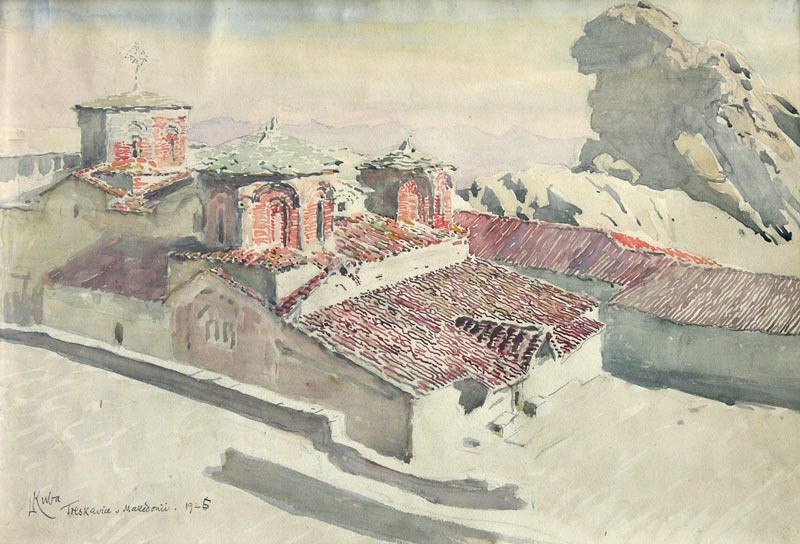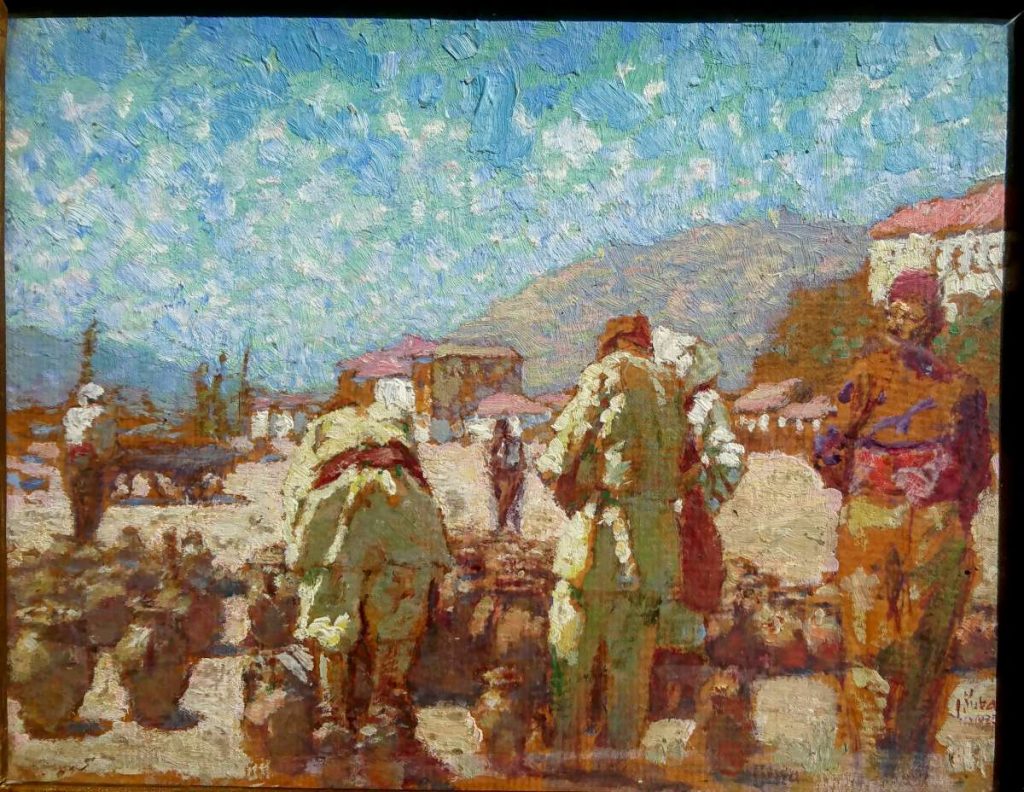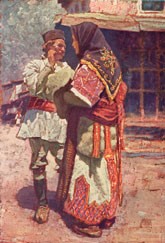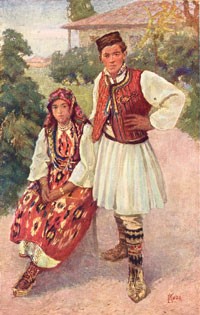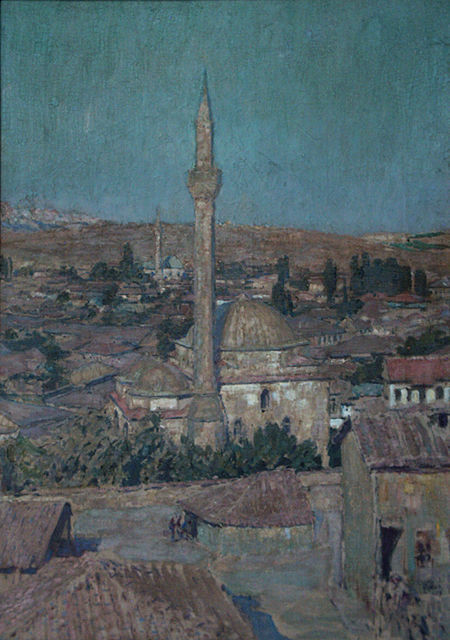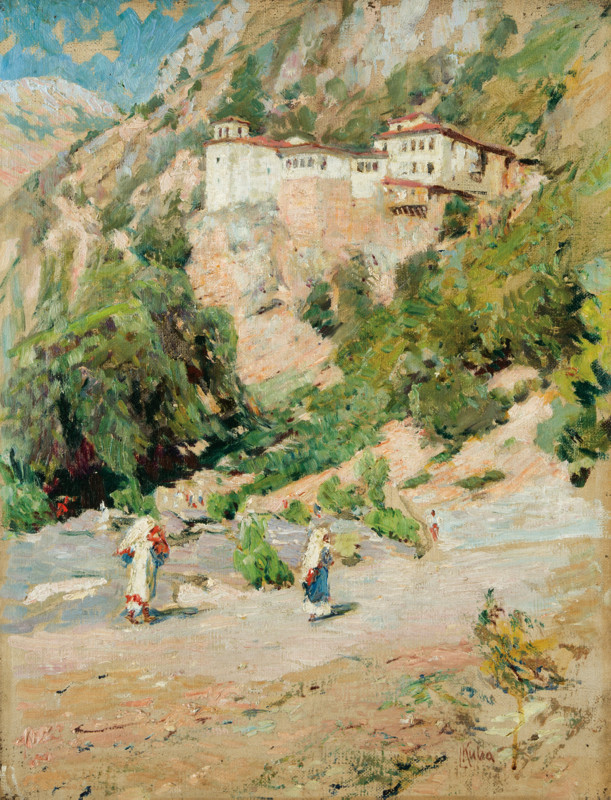Born in Podebrady on 16.04.1863, died in Prague on 30.11.1956. Ludvik Kuba was Czech landscape painter, musician, writer, collector of folk traditions and a professor at the Academy of Fine Arts. Ludvík Kuba studied to play the organ and privately learned drawing from Bohuslav Schnirch and Karel Liebscher. He was accepted to the Academy of Fine Arts in Prague and educated in the studio of Max Pirner (1891-93). Then he studied at Académie Julian in Paris (1893-95) and the school of Anton Ažbe in Munich (1895-1904). In 1911, he returned to Prague and he had successful exhibitions in Vienna, Venice, Rome and Dresden. His style was unique, he did not follow any of the mainstream European art groups or styles. He has developed his own style – based on the folk traditions and ethnographic impressionistic compositions. He then devoted his life to painting and collecting folk songs (e.g. “Slavonic peoples in their songs” recorded 4000 songs) and writing about folk traditions. He was awarded a lot of Czech and international prizes. He traveled through the Balkans, observed local Slavic cultures and wrote in detail about the local customs, history and ethnic feeling of the people.
Ludvik Kuba stayed Macedonia between 1925-27, mainly focusing on the studying the folk traditions and songs from Skopje, Galichnik, Bitola and Ohrid regions. In Ohrid, he met his compatriot – ethnologist and musicologist Julius Komarek, who wrote the book “Unknown Macedonia” in 1940. Kuba conducted a very detailed and extensive study of the distinct ethnic Macedonian culture and tradition and described his findings and impressions in the book called “Book about Macedonia (1925-1927)”. The book was first published in Prague in 1932. This book describes the distinct Macedonian identity and criticizes the assimilation policies that were conducted by the countries who divided Macedonia. Several of his Macedonian paintings are in the collection of the Museum of Contemporary Art in Skopje. A watercolor entitled “Treskavec Monastery 1925” and an oil on panel entitled “Pottery market in Shtip 1925” are in a private collection of the author of this book.
